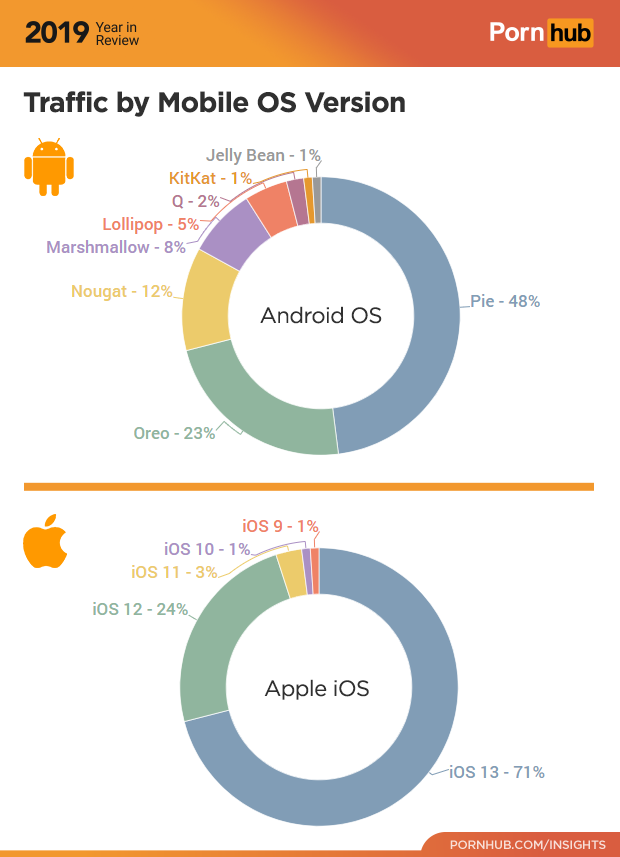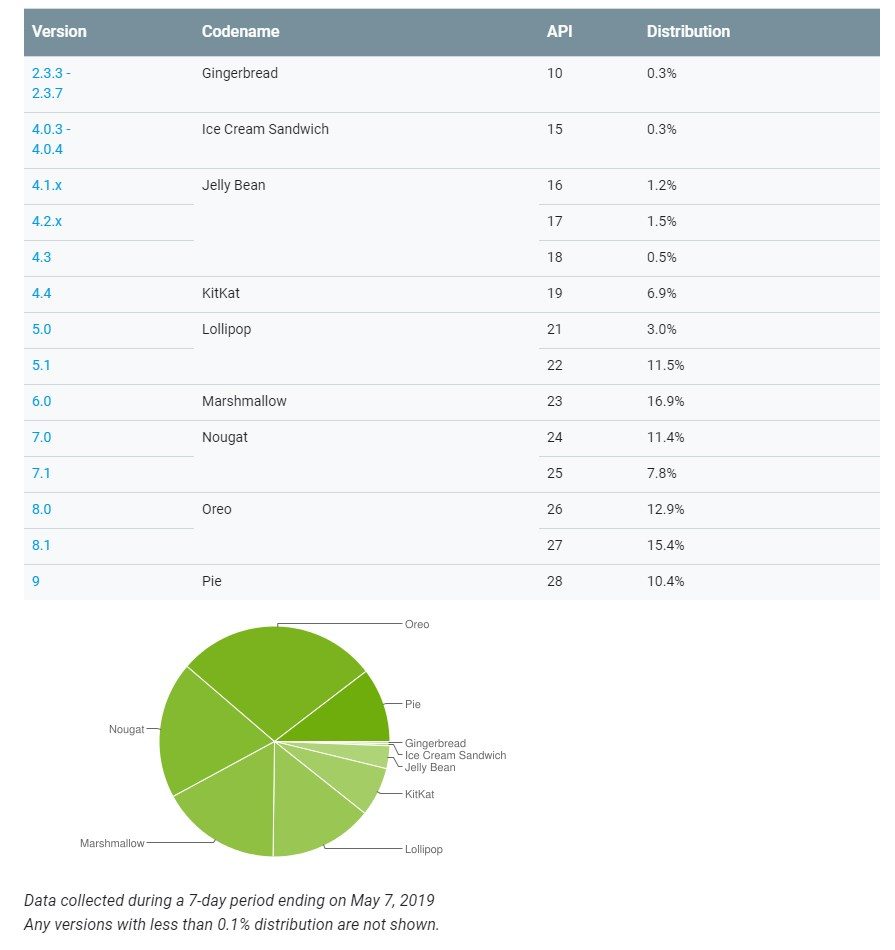PornHub has done an annual ‘Year in Review’ blog post for several years at this point, and the 2019 version was just published. Considering the sheer popularity of a website like Pornhub, this is probably going to be the closest we get to accurate Android distribution statistics, unless a site like Facebook or Wikipedia decides to share their analytics.
The data is interesting because Google hasn’t updated its own dashboard of how many devices are on each version of Android since May, so for months we haven’t had any Android OS adoption figures. And with Pornhub being a top 50 site in the global Alexa rankings, it’s somewhat plausible that its data is in the ballpark of 2019 Android OS usage.
EDITOR’S PICK: Upgraded Huawei Mate X with a better hinge & tougher screen coming to MWC 2020

Pornhub has taken up the mantle of delivering an Android distribution chart. You’ll note that the stats shown on Pornhub’s chart look nothing like those seen in Google’s official version. The difference is that the official distribution dashboard shows all “active” Android devices, which including things like kiosks. Pornhub’s chart, as you would expect, only measures those devices that have browsed their site.
Because of this, we can’t directly compare data between the two sources. But Pornhub’s data can at least give us an idea of general Android OS adoption trends. Android Pie takes the largest piece of the pie chart, running on 48% of the measured devices. Oreo followed with 23%, Nougat at 12%, Marshmallow at 8%, Lollipop at 5%, and older versions sharing the last 4%.

Android 10/Android Q only managed 2 percent of traffic, but seeing as the figures are for the whole year and it was only launched in September that low number is to be expected, especially as it only reached Galaxy phones over the last month.
It’s also interesting that by comparison to Pornhub’s stats for 2018, Android Pie has seen significantly higher adoption one year post-release than Android Oreo did (48% vs 41%). This further demonstrates the success of Project Treble, Google’s effort, beginning with Oreo, to make Android updates much easier for OEMs to develop and deliver.
UP NEXT: Best Music Player Apps (Online + Offline) for Android of 2019
(Source)




